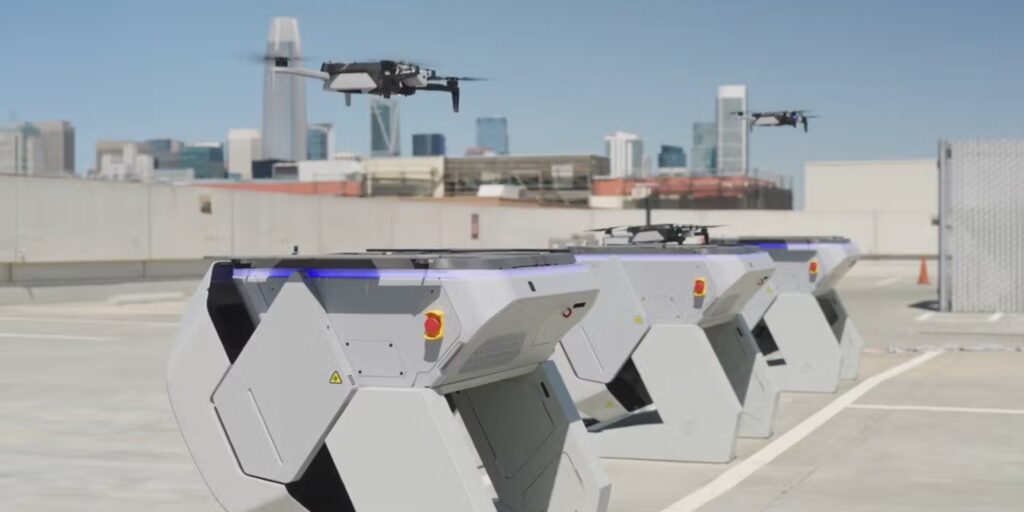
Guide
Continuous Monitoring: An In-Depth Guide [New for 2025]
Continuous monitoring is the ongoing collection and analysis of real-time data to assess the performance and health of systems and assets.
In industrial operations, continuous monitoring plays a critical role in ensuring that equipment and infrastructure remain reliable and efficient over time.
It provides immediate insight into system performance, enabling quick responses to potential issues before they become costly failures.
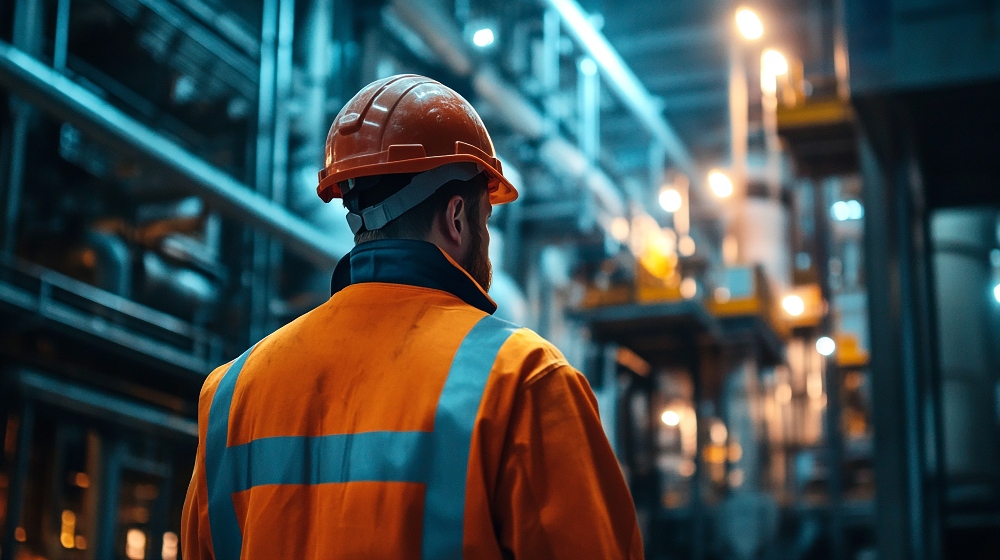
For industries like Oil & Gas, manufacturing, and energy, continuous monitoring is vital for maintaining the integrity of critical infrastructure, reducing downtime, and preventing disruptions that could impact production or safety.
[Related read: What Is the Hierarchy of Control?]
By continuously tracking asset conditions, operators can make data-driven decisions that improve asset reliability, enhance safety, and increase efficiency. This proactive approach ensures that maintenance is scheduled before failures occur, which helps extend asset lifespan and reduces costly emergency repairs.
This guide focuses on continuous monitoring in industrial inspections. But it’s important to note that continuous monitoring is also used in several other fields:
- Continuous monitoring in labor. Ongoing monitoring of worker conditions to ensure safety and compliance.
- Continuous monitoring in medicine. Real-time monitoring of patient health metrics (e.g., heart rate, blood sugar).
- Continuous monitoring in cybersecurity. Ongoing surveillance of IT systems to detect potential security breaches.
- Continuous monitoring in DevOps. Tracking system performance in software development to ensure stability and detect issues early.
Use the menu to the right to jump around or continue reading for the full guide.
What Is Continuous Monitoring?
Continuous monitoring is a method of collecting real-time data to assess the performance and health of assets and systems over time.
Using this approach to maintenance, operators can track the condition of equipment, machinery, pipelines, and other assets continuously, providing valuable insights into their status and helping identify potential issues before they lead to failures.
In industrial inspections, continuous monitoring plays a key role in maintaining operational efficiency and safety. By regularly collecting data from sensors and other monitoring tools, companies can:
- Ensure their assets are functioning as expected
- Prevent unplanned downtime
- Minimize costly repairs.
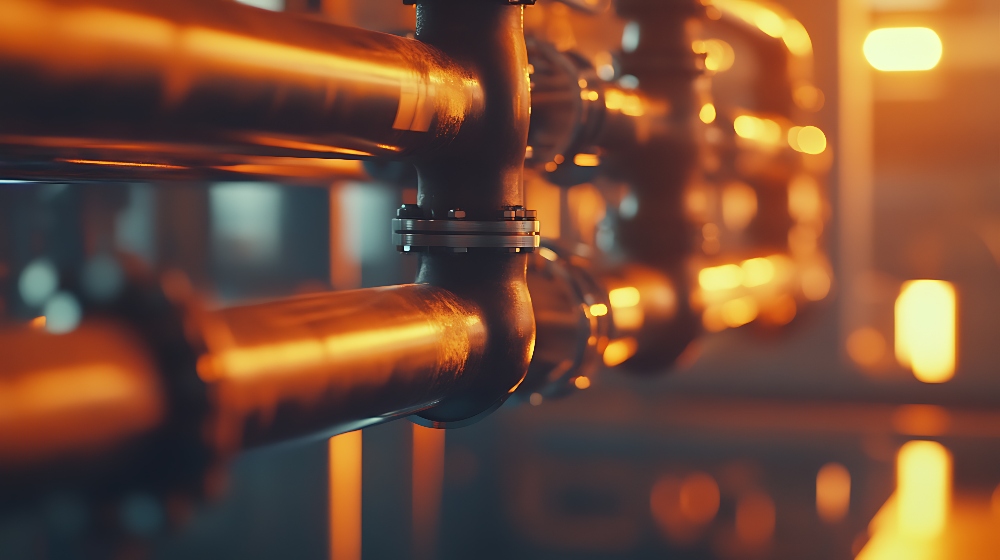
Five Benefits of Continuous Monitoring
The main benefits of continuous monitoring in inspections are:
1. Preventing Downtime
By detecting potential issues early, continuous monitoring helps prevent unexpected failures and reduces the risk of costly repairs.
2. Maintaining Asset Integrity
Continuous data collection ensures that equipment and infrastructure remain in safe working condition, reducing the likelihood of breakdowns and extending asset life.
3. Improved Safety
Continuous monitoring enhances workplace safety by identifying risks and allowing corrective action before accidents happen.
4. Proactive Maintenance
By tracking asset performance in real-time, continuous monitoring enables predictive maintenance, reducing unplanned downtime and keeping equipment in optimal working condition.
5. Extended Lifespan of Assets
Regular monitoring helps identify wear and tear early, allowing for timely repairs and maintenance, which contributes to the long-term health and durability of machinery and infrastructure.
Continuous Monitoring Tools
Continuous monitoring tools are essential in ensuring the health, safety, and efficiency of industrial systems.
These tools fall into both hardware and software categories, with hardware collecting data and software analyzing it to produce real-time insights on the condition of assets.
Below, we’ll explore the various types of tools used in continuous monitoring, along with specific examples that highlight their applications in industrial inspections.
Continuous Monitoring Hardware
Hardware tools are physical devices used to collect real-time data, providing essential information on the condition of industrial systems.
These include sensors, cameras, drones, and other monitoring devices designed to track various performance parameters.
1. Gas Sensors
These sensors can continuously monitor gas leaks on pipelines, tanks, and other assets. They can help prevent leaks and failures by detecting leaks at early stages.
Example: MFE Detect LW
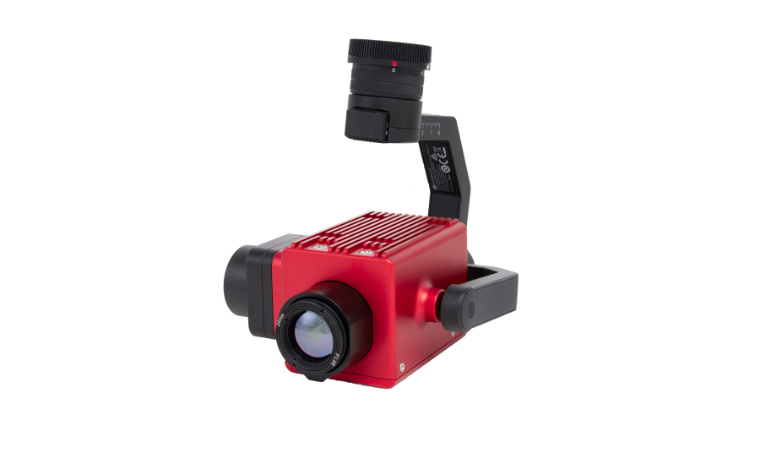
This OGI camera is specifically designed for gas detection and is made to be attached to a commercial drone. It provides real-time data to identify potential risks, such as leaks or degradation, ensuring that corrective actions can be taken before system failures occur.
Learn more about the MFE Detect LW.
2. Thermal Cameras
Thermal imaging allows operators to detect temperature anomalies in equipment, pipelines, and machinery. It is especially useful for identifying overheating issues and preventing damage from thermal stress.
Example: The FLIR E95 IR Camera

The FLIR E95 is a high-performance infrared camera built for professional thermographic inspections in electrical, mechanical, and building applications.
Learn more about the FLIR E95 IR.
3. Drone-in-a-Box
Drones can capture real-time data from places that are difficult or dangerous for human inspectors to access, such as offshore platforms or tall structures. By placing a drone in a nest or a box, the drone becomes a continuous monitoring tool that can be deployed for data collection remotely at any time.
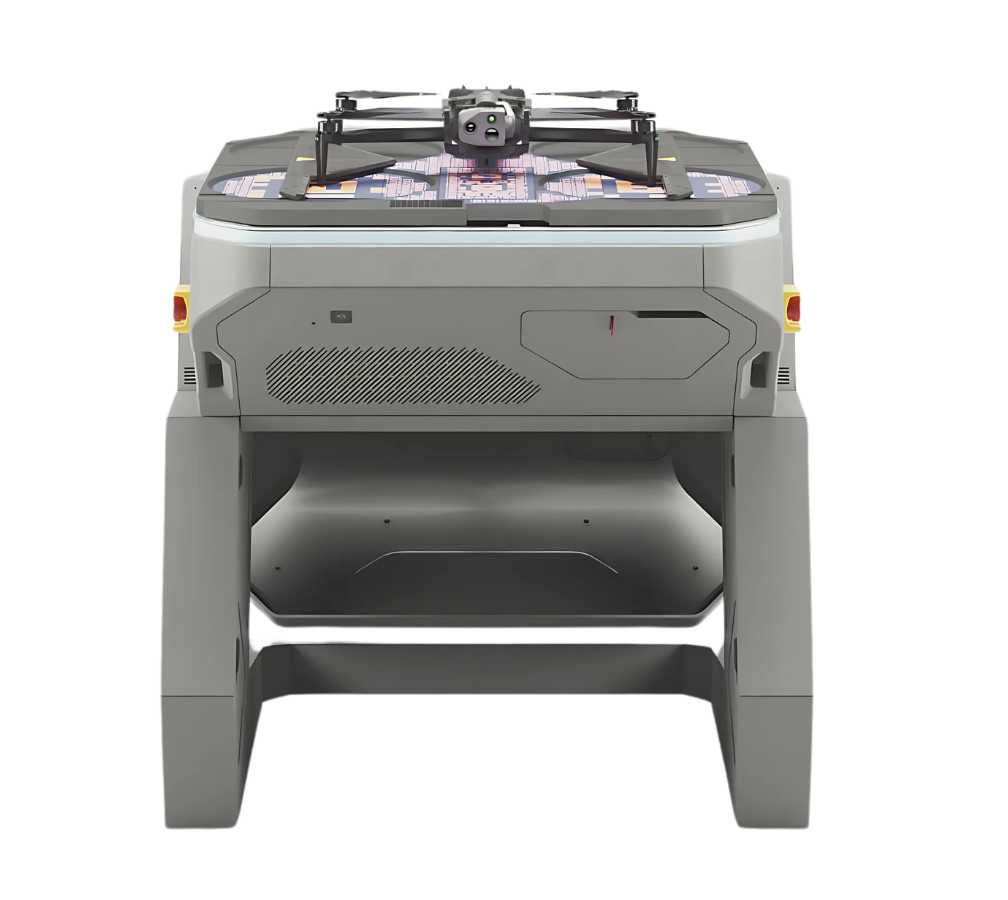
Example: Skydio X10 and the X10 Dock
This drone-in-the-box solution enables autonomous, continuous monitoring in challenging environments like pipelines, offshore platforms, and refineries. The drone autonomously collects data, reducing the need for human intervention in hazardous environments.
Learn more about the Skydio X10 and Dock.
4. Pressure Sensors
These sensors monitor fluid pressure in tanks, reactors, and pipelines, ensuring systems remain within safe operational limits to avoid dangerous failures.
5. Vibration Sensors
Used to detect abnormal vibrations in rotating machinery, pumps, and other mechanical systems, vibration sensors play a key role in identifying early signs of failure.
6. Corrosion Sensors
These sensors continuously monitor the rate of corrosion on pipelines, tanks, and other metal assets. They help prevent leaks and failures by detecting corrosion at early stages.
Continuous Monitoring Software
Software platforms analyze and visualize the data collected from various hardware tools.
These platforms provide valuable insights, helping operators make data-driven decisions and optimize maintenance schedules to improve efficiency and safety.
1. Data Management Platforms
These platforms collect, process, and visualize real-time data from multiple sensors, helping businesses monitor asset performance and respond to potential issues in a timely manner.
Example: SCADA Systems
SCADA (Supervisory Control and Data Acquisition) systems are widely used in industrial operations to centralize real-time data from various sensors, enabling operators to monitor systems and take corrective actions based on the insights provided.
2. Predictive Maintenance Software
Using AI and machine learning, predictive maintenance software analyzes continuous monitoring data to predict when equipment is likely to fail. This allows businesses to perform maintenance proactively, reducing unplanned downtime.
Example: IBM Maximo
IBM Maximo is a widely used predictive maintenance platform that integrates with continuous monitoring tools to forecast equipment failures and optimize maintenance schedules.
Integrating Continuous Monitoring in Existing Systems
Integrating continuous monitoring tools into existing industrial operations is crucial for optimizing asset management and improving safety.
Businesses can begin by selecting key assets or systems for monitoring, ensuring a smooth integration with existing maintenance workflows and legacy systems.
Here are the three main ways to approach integration:
1. Seamless Integration
Continuous monitoring tools can be integrated with legacy systems like SCADA or maintenance management systems, allowing businesses to enhance operational visibility without disrupting current workflows.
2. Incremental Integration
Start by implementing continuous monitoring in high-priority areas, then gradually expand to other assets or systems. This phased approach allows for a smoother transition and quicker returns on investment.
3. Enhancing Existing Workflows
Continuous monitoring can improve existing workflows by providing real-time insights into asset health, enabling businesses to take timely action, streamline maintenance processes, and reduce unplanned downtime.
Types of Continuous Monitoring
Continuous monitoring is essential in industrial inspections for ensuring the ongoing health and performance of equipment, machinery, and infrastructure.
Inspectors use real-time data collection methods to track the condition of critical assets, while emerging remote and autonomous monitoring technologies are enhancing inspection capabilities, especially in hazardous or hard-to-reach areas.

Here are the main types of continuous monitoring.
1. Real-Time Data Collection
Real-time data collection is the backbone of continuous monitoring, providing immediate insights into the condition of industrial systems.
Here are the key types of real-time monitoring used in industrial inspections:
- Vibration monitoring. Vibration monitoring detects abnormal vibrations in machinery and rotating equipment, particularly pumps. It is essential for identifying early signs of failure in mechanical systems, such as imbalances or misalignments, that could lead to costly breakdowns or safety hazards.
- Corrosion monitoring. Corrosion monitoring involves sensors that continuously measure the rate of corrosion on critical infrastructure, such as pipelines, tanks, and other metal components. Early detection of corrosion is crucial for preventing leaks, system failures, and safety incidents, especially in industries like Oil and Gas.
- Temperature monitoring. Temperature monitoring tracks the temperature of equipment and systems that are at risk of overheating or freezing. This is especially important for ensuring the longevity and reliability of machinery, as extreme temperatures can cause components to degrade or fail.
- Pressure monitoring. Pressure monitoring continuously checks fluid pressure in pipelines, tanks, and reactors, ensuring that these systems remain within safe operational limits. Pressure monitoring is crucial in preventing catastrophic failures, such as leaks, ruptures, or explosions, in high-risk environments like refineries or chemical plants.
Remote and Autonomous Monitoring
Remote and autonomous monitoring technologies are transforming how continuous monitoring is performed in environments that are difficult or hazardous for humans to access.
Drones and sensors are enabling real-time data collection from remote locations, providing a safer and more efficient alternative to traditional inspection methods.
Drones for Continuous Monitoring
Drones equipped with real-time data sensors are used to monitor hard-to-reach areas, such as pipelines, offshore platforms, or high-altitude structures.
These drones can capture high-resolution images, thermal data, and even detect gases, providing inspectors with valuable insights without the need for human presence in hazardous environments.

Example use case: pipeline inspections
Drones with integrated sensors are commonly used for pipeline inspections.
These drones can fly over long stretches of pipeline, collecting data on the condition of the pipeline, detecting leaks, and capturing thermal images that reveal temperature anomalies—information that would be difficult to gather through manual inspections.
Continuous Monitoring Examples in Industrial Inspections
Continuous monitoring is used in a range of sectors to detect potential issues early, allowing for proactive maintenance and reducing costly downtime.
Below are examples of how continuous monitoring is applied in key industries to improve operational efficiency and asset reliability.

Oil & Gas Industry
Continuous monitoring in the Oil & Gas industry is essential for managing assets in hazardous environments and preventing costly downtimes.
From refineries to offshore platforms, sensors are used to detect potential problems early, ensuring operational safety and efficiency.
Continuous monitoring use cases in Oil & Gas:
- Corrosion monitoring. Real-time monitoring of corrosion rates on pipelines and storage tanks using corrosion sensors.
- Vibration monitoring. Detecting abnormal vibrations in rotating machinery to prevent mechanical failure.
- Gas detection. Continuous air quality monitoring to detect hazardous gases in confined or offshore spaces.
Energy and Power Generation
In the energy and power generation sector, continuous monitoring is critical for ensuring that high-risk assets like turbines, boilers, and reactors operate within safe parameters.
Real-time data collection helps identify potential issues before they lead to downtime or catastrophic failure.
Continuous monitoring use cases in Power Gen:
- Temperature monitoring. Tracking the temperature of turbines and reactors to prevent overheating and ensure optimal operation. Heat stress monitoring is also commonly done to protect workers from overexposure to extreme heat.
- Pressure monitoring. Real-time pressure measurements in boilers to maintain safe pressure levels and avoid dangerous fluctuations.
- Vibration monitoring. Detecting abnormal vibrations in rotating equipment like turbines to identify potential issues before they cause damage.
Manufacturing and Heavy Equipment
Continuous monitoring in manufacturing and heavy equipment industries is crucial for maintaining the health of machinery and production lines.
By continuously collecting data on equipment conditions, manufacturers can predict failures and improve overall system efficiency, leading to increased productivity and reduced downtime.
Continuous monitoring use cases in Manufacturing:
- Vibration monitoring. Monitoring the health of rotating machinery like motors and compressors to detect early signs of failure.
- Heat monitoring. Tracking temperatures in production lines to prevent overheating and ensure operational safety.
- Wear monitoring. Monitoring the wear and tear of heavy equipment parts, such as bearings and gears, to schedule proactive maintenance before failure occurs.
Challenges and Limitations of Continuous Monitoring
While continuous monitoring systems offer several benefits, including real-time data collection and predictive maintenance, there are challenges that come with implementing and maintaining these systems.
These challenges can sometimes hinder the optimal use of continuous monitoring tools, but with the right strategies, they can be addressed effectively.
This section explores some of the most common obstacles associated with continuous monitoring in industrial inspections and offers practical solutions to overcome them.
1. Data Overload
Problem: One of the biggest challenges with continuous monitoring systems is the large volume of data they generate. Sensors, cameras, and IoT systems can produce massive amounts of data, which can overwhelm users and potentially lead to information paralysis. With the constant stream of data, operators may struggle to extract meaningful insights from the sheer volume of information.
Solution: To effectively manage data overload, it is crucial to implement strategies that help filter and prioritize relevant data.
Best practices include:
- Using AI or machine learning algorithms to automatically process data, highlighting the most critical issues.
- Setting up real-time alerts that focus on key performance indicators and asset health, ensuring that only the most urgent issues are brought to attention.
- Implementing data management platforms, such as SCADA or predictive maintenance software, which organize and filter data, presenting actionable insights for the operators.
Example: In industries like oil & gas, data management platforms help organize sensor data from pipelines, allowing operators to focus on actionable insights rather than being overwhelmed by data.
2. Accuracy and Calibration
Problem: Continuous monitoring systems rely on precise sensors and tools to deliver accurate data. Poor calibration or inaccurate readings can lead to false positives (e.g., indicating an issue that doesn’t exist) or missed detections (e.g., failing to identify a potential issue in time), both of which can have costly consequences for industrial operations.
Solution: Ensuring the accuracy of monitoring tools requires regular calibration and maintenance of sensors and equipment.
Best practices include:
- Implementing a routine schedule for sensor calibration to maintain high levels of accuracy.
- Using reliable, high-quality monitoring tools and sensors to minimize the risk of inaccurate data.
- Providing ongoing training for operators to ensure they can effectively manage and operate the tools, and recognize when calibration or maintenance is needed.
Example: In the oil & gas industry, accurate corrosion monitoring is essential for pipeline integrity. Regular sensor calibration helps prevent missed detections of corrosion, which could otherwise lead to catastrophic pipeline failures.
3. Cost
Problem: Implementing continuous monitoring systems requires a significant upfront investment, including costs for sensors, hardware, software, and integration. Additionally, there are ongoing operational and maintenance costs, such as sensor recalibration, software updates, and training for personnel.
Solution: Although the initial costs may be high, the long-term benefits of continuous monitoring systems—such as reduced downtime and extended asset lifespan—often outweigh the costs. To maximize ROI, businesses should prioritize investments in the following areas:
- Critical machinery and high-risk assets, where monitoring can prevent catastrophic failures and production halts.
- High-value assets that would benefit the most from continuous monitoring, such as turbines, reactors, or pipelines.
- Systems where predictive maintenance can be implemented, reducing unplanned downtime and extending the life of critical equipment.
Example: Power generation facilities may face high initial costs for temperature and pressure monitoring tools, but the return on investment comes from minimizing the risk of costly equipment failures and production stoppages. By detecting issues early, continuous monitoring helps extend the lifespan of turbines and reactors.
Implementing Continuous Monitoring in Your Operations
Implementing continuous monitoring can help you reduce downtimes, extend the lifespan of your assets, and improve operational safety. But how do you get started?
Here’s a step-by-step guide:
1. Assessing Assets and Processes
The first step in implementing continuous monitoring is to assess which assets or processes would benefit most from real-time monitoring.
Businesses should start by identifying critical assets or high-risk equipment that are prone to failure or difficult to monitor manually. Key factors to consider include:
- The age and condition of the asset
- Failure rates of equipment or machinery
- The criticality of the asset to operational workflows
Examples of assets that may benefit from continuous monitoring include pumps, pipelines, turbines, and valves in industries such as oil & gas, manufacturing, and energy. Prioritize high-risk equipment that, if it fails, could cause significant operational disruptions or safety concerns.
2. Choosing the Right Monitoring Tools and Sensors
Once assets are identified, businesses must select the appropriate monitoring tools and sensors for their specific needs.
Factors to consider when choosing monitoring tools include:
- The type of asset being monitored. Some assets require specialized sensors, such as vibration sensors for rotating machinery or temperature sensors for equipment prone to overheating.
- The type of data required. Determine whether the focus is on detecting vibrations, measuring temperatures, monitoring corrosion, or tracking other performance parameters.
- The environment where the monitoring will take place. Certain environments, like offshore platforms or confined spaces, may require rugged, explosion-proof sensors and equipment that can withstand harsh conditions.
Popular continuous monitoring tools include:
- IoT sensors. These sensors can continuously collect and transmit data from various assets, providing real-time insights into asset health.
- Drones. Drones equipped with cameras, thermal sensors, or gas detectors can perform inspections in hard-to-reach or hazardous areas, like pipelines or offshore platforms.
- Corrosion monitoring devices. These sensors track the rate of corrosion in metal assets, such as pipelines and storage tanks, helping to prevent leaks and failures.

3. Integration with Maintenance and Inspection Practices
One of the main benefits of continuous monitoring is its ability to integrate with predictive maintenance systems.
By continuously collecting real-time data, predictive maintenance systems can analyze this data and predict when an asset is likely to fail. This allows businesses to address potential issues before they lead to unplanned downtime, optimizing resource allocation and reducing maintenance costs.
4. Reducing Manual Inspections
Continuous monitoring also reduces the need for manual inspections, which can be time-consuming and hazardous.
With real-time data, operators can receive alerts when an asset is out of specification or when performance deviates from the norm.
Doing this allows maintenance teams to focus their inspections on areas where data indicates potential issues, improving efficiency and safety.
5. Streamlining Maintenance Practices
Incorporating continuous monitoring into existing maintenance practices can streamline workflows and improve efficiency.
Automated alerts and remote monitoring allow teams to respond quickly to potential issues, reducing the risk of equipment failure and minimizing downtime.
This approach also enables a shift from scheduled maintenance to condition-based maintenance, where maintenance activities are driven by data rather than predefined schedules.
6. Training and Empowering Your Team
Proper training is essential when implementing continuous monitoring. Ensure that your team understands how to use the monitoring tools and sensors, interpret the data, and take appropriate action when alerts are triggered.
Training should also cover the integration of continuous monitoring into existing workflows, as well as how to leverage data for predictive maintenance and decision-making.
7. Establishing Performance Benchmarks
Once continuous monitoring is in place, establish performance benchmarks to measure the effectiveness of your monitoring system.
Track metrics such as downtime reduction, maintenance cost savings, and asset lifespan extension. These benchmarks will help you assess the impact of your continuous monitoring system and make adjustments as necessary to optimize performance.
8. Evaluating and Scaling Up
As you begin seeing the benefits of continuous monitoring on your critical assets, consider expanding the system to cover additional equipment or processes.
Doing this can help you capture even more data and improve operational performance across your entire operation.
Regularly evaluate the effectiveness of your continuous monitoring system to ensure it continues to meet your business needs as it scales.
The Future of Continuous Monitoring in Industrial Inspections
Continuous monitoring in industrial inspections is evolving rapidly, driven by advancements in technology.
As industries look to improve efficiency, safety, and predictive capabilities, the future of industrial inspections will rely heavily on cutting-edge tools like AI, machine learning, and advanced sensors.
These technologies will enable businesses to monitor assets in real-time, predict failures before they occur, and streamline maintenance processes to optimize operations.
1. Emerging Technologies
AI and Machine Learning
The role of artificial intelligence (AI) and machine learning in continuous monitoring is growing rapidly. AI helps analyze vast amounts of data in real-time, identifying patterns and predicting potential failures before they occur.
This technology can automate the detection of anomalies, enabling quicker responses to maintenance needs and preventing costly breakdowns.
Example: AI systems can automatically analyze sensor data from various sources such as vibration, temperature, and pressure. These systems can identify irregularities, suggest preventative measures, and even predict when equipment will likely fail, enabling proactive maintenance.
Advanced Sensors
Advanced sensors, including multi-spectral and hyperspectral sensors, are becoming increasingly valuable in continuous monitoring systems. These sensors provide detailed, high-resolution data that offers better insights into asset conditions, allowing for more accurate monitoring in complex environments.
By capturing data that was previously hard to gather, these sensors help detect early signs of wear or corrosion.
Example: In Oil & Gas, sensors that detect minute changes in machinery wear or corrosion can alert operators to issues before they lead to significant damage, improving asset reliability and reducing downtime.
2. The Growing Importance of Real-Time Data
The reliance on real-time data is increasing, and for good reason.
Real-time monitoring enables predictive maintenance by providing immediate insights into the health of assets.
By collecting and analyzing data on the spot, businesses can act quickly to avoid unexpected failures and reduce operational costs.
Example: Real-time temperature and pressure monitoring in power plants can help identify a potential overheating issue before it leads to system failure, preventing costly repairs and minimizing downtime.
3. Drone-in-the-Box Solutions Combined with AI-Powered Software
Drone-in-the-box solutions, such as the Skydio X10 and X10 Dock, are poised to revolutionize continuous monitoring in industrial inspections.

These autonomous drones, integrated with AI-powered software, provide remote, continuous monitoring capabilities in hard-to-reach or hazardous areas. As drones fly autonomously and collect data, the software analyzes the data in real-time, identifying issues and triggering necessary maintenance actions without human intervention.
Example: Drones equipped with advanced sensors, such as gas detectors and thermal imaging cameras, can autonomously conduct inspections in remote areas like offshore platforms or pipelines. The drones send real-time data to AI-powered software, which analyzes the information and makes real-time decisions about necessary actions.
The Impact of the FAA’s Part 108 BVLOS Rule
The upcoming FAA Part 108 BVLOS (Beyond Visual Line of Sight) rule will unlock new opportunities for remote drone operations in industrial inspections.
This regulation allows drones to fly beyond the operator’s line of sight, opening up new possibilities for monitoring areas that were previously inaccessible, such as large industrial sites, offshore platforms, and remote pipelines.
Example: With BVLOS capabilities, drones can conduct autonomous inspections in challenging environments, like offshore oil platforms, without the need for a human pilot nearby. This will not only improve operational efficiency but also reduce safety risks by minimizing the need for personnel to enter hazardous areas.
Continuous Monitoring FAQ
Here are answers to the most commonly asked questions about continuous monitoring.
What is continuous monitoring?
Continuous monitoring refers to the ongoing, real-time collection of data from industrial assets to assess their performance, health, and condition over time. It enables businesses to track vital metrics such as temperature, vibration, pressure, and corrosion in order to maintain asset reliability, optimize operations, and prevent unexpected failures. In industrial inspections, continuous monitoring ensures that systems are functioning as expected, identifying potential issues before they become critical.
What are the main benefits of continuous monitoring in industrial inspections?
Continuous monitoring provides several advantages in industrial inspections, including:
- Improved safety. By detecting issues early, continuous monitoring helps prevent accidents and ensures that maintenance teams can intervene before a failure leads to a hazardous situation.
- Reduced downtime. Early detection of potential problems enables maintenance teams to address issues before they cause operational disruptions, minimizing unplanned downtime.
- Extended asset lifespan. Proactively addressing issues helps to preserve the health of assets, reducing wear and tear and extending the overall life of critical equipment.
How does continuous monitoring differ from traditional inspection methods?
Traditional inspection methods typically rely on periodic checks or manual inspections that may miss issues between visits. Continuous monitoring, on the other hand, provides real-time data that allows for constant surveillance of asset performance. This enables earlier identification of problems and more informed decision-making, reducing the need for frequent manual inspections and improving the efficiency of maintenance activities.
What types of continuous monitoring tools are used in industrial inspections?
There are several types of tools used for continuous monitoring in industrial inspections, including:
- Sensors. Corrosion sensors, temperature sensors, vibration sensors, and pressure sensors help monitor various aspects of machinery and infrastructure, ensuring that systems stay within safe operating parameters.
- Drones. Drones equipped with cameras, thermal sensors, and gas detection systems are used for inspecting hard-to-reach or hazardous areas. They provide real-time data and allow for autonomous inspections, particularly in dangerous or remote locations.
- Monitoring software. Software platforms like SCADA systems and predictive maintenance tools help aggregate and analyze data from sensors, allowing operators to visualize asset performance and make data-driven decisions for maintenance and repairs.
What industries benefit most from continuous monitoring?
Continuous monitoring is crucial in industries where maintaining asset integrity and safety is a top priority. Key industries include:
- Oil & Gas. Continuous monitoring of pipelines, refineries, and offshore platforms helps detect corrosion, leaks, and equipment malfunctions before they cause costly damage or safety hazards.
- Power Generation. Monitoring turbines, boilers, and reactors ensures systems operate within safe limits, preventing failures that could lead to extended downtime or even catastrophic events.
- Manufacturing. In manufacturing, continuous monitoring of machinery and production lines helps identify wear and tear early, preventing breakdowns and optimizing operational efficiency.
How do drones contribute to continuous monitoring in industrial inspections?
Drones are increasingly being used for continuous monitoring in industrial inspections due to their ability to access hard-to-reach or hazardous areas. Drones equipped with advanced sensors (e.g., thermal cameras, gas detectors) can autonomously conduct inspections and transmit real-time data for analysis. This capability enables safer and more efficient monitoring of infrastructure, such as pipelines, offshore platforms, and power plants.
How do AI and machine learning enhance continuous monitoring systems?
AI and machine learning play a significant role in enhancing continuous monitoring by processing vast amounts of data in real time. These technologies help identify patterns, detect anomalies, and predict potential failures based on historical data and real-time insights. By analyzing sensor data and performance metrics, AI-driven systems can automatically trigger alerts or maintenance actions, improving operational efficiency and preventing costly breakdowns.
For example, AI-powered software can analyze vibration and temperature data from sensors to predict when machinery will need maintenance, enabling proactive repairs and minimizing unplanned downtime.
What are the challenges of implementing continuous monitoring systems?
While continuous monitoring offers significant benefits, there are several challenges to consider including data overload, accuracy concerns, and startup costs.
What is the future of continuous monitoring in industrial inspections?
The future of continuous monitoring in industrial inspections will be shaped by emerging technologies such as AI, machine learning, and advanced sensors. As these technologies evolve, they will enable more efficient and accurate monitoring systems, improving predictive maintenance capabilities and overall operational safety. Additionally, the integration of drones and autonomous monitoring systems will allow for remote inspections in previously inaccessible areas, further enhancing the capabilities of continuous monitoring systems.
